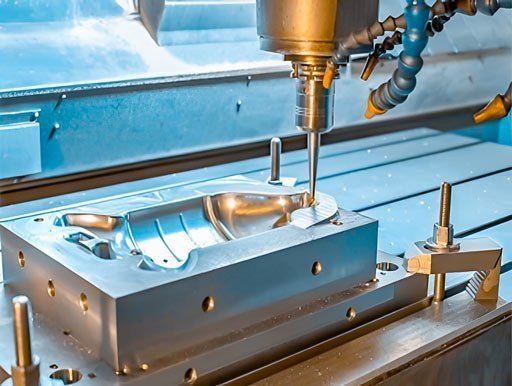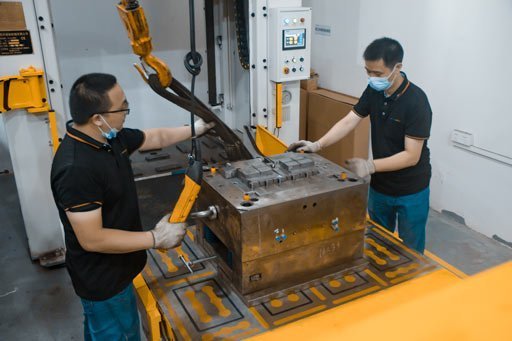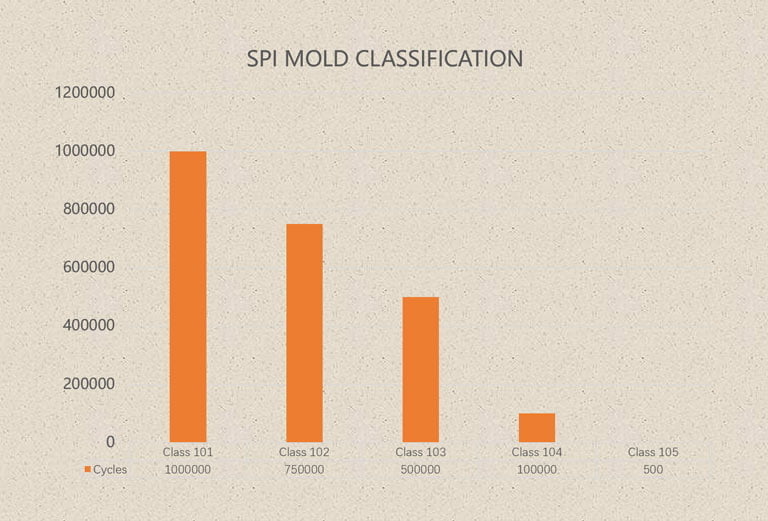When considering plastic injection molding for their components, businesses have a variety of choices that must be made. An experienced plastic injection molding company will be able to guide you through determining which material, molding method, and 3D printing alternatives are most suited to the requirements of the component being formed. Choosing whether steel molds or aluminum molds are the optimal material for the mold itself is an additional subject that may be brought up. It should come as no surprise to manufacturers familiar with metals that the two most common metals used to construct tools have their benefits and drawbacks.
When deciding between the two types of molds, companies must look at how their molded parts are used and their production needs, including the parts’ sophistication, finish, and longevity. Both types of molds are often used in injection molding.

Aluminum Molds
The lightweight, flexible, and heat-resistance of aluminum allow for the creation of molds with similar features. Molds made from aluminum are now cheaper to produce than those made from steel. Because of this, aluminum molds are more suitable for moderate-sized manufacturing runs involving hundreds to thousands of units than for massive ones.
A lower amount of time is spent waiting for aluminum molds to cool after each cycle because of the metal’s inherent thermal conductivity. By doing so, metal molds may be heated uniformly, reducing the potential for injection molding defects, waste, and rejections.

However, aluminum’s strengths are also its weaknesses. Since of the metal’s softness, it can’t be used to make complicated designs because the accuracy decreases with increasing intricacy. Aluminum molds also wear out faster than their steel counterparts; thus, it’s not proper to utilize them for high-volume manufacturing.
Steel Molds
Injection molds made from steel are ideal for sustained, high-volume manufacturing because of their durability. Steel molds may be more economical than aluminum molds; however, the exact figure may vary greatly depending on how many parts are being molded. Though steel’s higher production cost discourages its widespread use, its compatibility with the vast majority of materials and sophisticated and complicated designs give manufacturers more leeway when making and using injection-molded components. Steel is the best option since it allows you a wider variety of finishes.
Steel molds cost more than aluminum molds to produce because of greater tooling costs. The material also requires more time to heat and cool than aluminum, which can increase production times. Replacing a steel mold that has been shattered in manufacturing is a time-consuming and expensive process.
Whether an injection mold is made of aluminum or steel is determined by the material of the object being formed. Producers must consider who will be using the product, where it will be utilized, what materials will be used, and how many units will be produced. A manufacturer might also benefit from the advice of industry professionals looking out for the company’s interests.

Cost and Time: Steel Molds vs. Aluminum Molds
Two primary expenses must be considered when determining an accurate price for tooling. The preliminary cost is associated with mold production. Second, there is the expense associated with making alterations to the mold. Time and money spent on tooling for steel and aluminum are compared below.
Cost To Make Or Replace Steel Vs. Aluminum Molds
An aluminum mold may be made for a quarter to half the price of a steel one. Compare the pricing of steel tooling from a Chinese vendor to a quote for aluminum tooling from the United States, and you’ll see that aluminum is the cheaper option in most cases.
Choosing a different mold style might add to the cost of making alterations. Aluminum tooling, for instance, is about a tenth as expensive as a new steel tool, independent of production location. Steel production is far more labor-intensive and lengthy than aluminum production.
Steel vs. Aluminium Molds: Create or Modify
An aluminum tool’s production time is between 15 and 25 working days. As a point of comparison, the average time to create a steel tool is between 35 and 60 business days.
Replacement of an aluminum device typically takes around five business days. In contrast, a steel tool replacement takes around 20 business days.
Advantages of Aluminum Molds
Durability
Thousands of shots won’t damage aluminum molds, and with care, components can withstand hundreds of thousands. Timeframes ranging from a year to several years are possible. An aluminum mold could be perfect for your product if you only need to make a few of them each year.

Tips: to learn more about the durability of a mold, please click here to check out the SPI Mold Classification.
Timing
Aluminum molds have the potential to be made faster than steel molds. While it may only take three or four weeks to complete a plastic mold, a steel mold may require twice or even three times as much time. Surface qualities, inserts for unique features, and part complexity are just a few factors affecting delivery time.
Cost
Aluminum molds typically cost a significantly lower price than their steel alternatives. Due to the fact that they can fast produce the mold and have it available for preliminary component testing, certain tooling firms may offer prices that are as cheap as half of what a steel mold would normally cost.
Improvements
Aluminum is harder to work with, so it’s best saved for components that won’t need frequent tweaks.
Shrinkage, Warping, and Other Faults
Aluminum’s greater heat dissipation enables molds to achieve more consistent heating and cooling periods, and to do so more rapidly, which is advantageous for reducing the quantity of faulty and rejected components. Sink marks, voids, and burn markings are among the most prevalent flaws caused by insufficient heating and cooling. Aluminum molds might offer even greater cost benefits in the appropriate application due to lower component rejection rates.
Simplicity Of Alteration And Maintenance
Due to the great hardness of steel, it can be extremely difficult and expensive to repair damaged or deformed steel molds. In such instances, a new mold is frequently necessary. Aluminum molds are far more amenable to repair and, as a softer material, may be adjusted more easily when production faults arise.
Supplies for Making Resin
Similarly to steel molds, aluminum molds can be filled with resin. Materials such as ABS, PC, PP, LCP, POM, and liquid silicone rubber are all viable options. Thermoplastics and thermosets are frequently used. As the pattern on the surface can be easily washed away or damaged by abrasive materials, care must be taken when using them. Because of its softer nature, aluminum is more likely to have its surface grain or features worn away by abrasive resin than steel.
Temperature Reduction
Aluminum has better heat dissipation than steel; hence it may not need the same cooling lines. This can simplify the mold design, reduce the cost of repairs, and shorten the time required to set up the machine for optimal cooling temperatures and flows.
Mold Constituents
Hokotol, Alumold 500, and QC-10, all produced by Alcoa, are the three most used alloys for making aluminum molds.
When Is It Best To Choose A Steel Injection Mould?
Despite all of aluminum’s advantages, it may not be the best choice for your next creation. Steel has been used to produce millions of parts with extremely tight tolerances over many years, proving its endurance and historic history. Consider steel for your next product for the following reasons:
Depreciation costs might end up being cheaper throughout the component’s useful life. Aluminum injection molds typically lose quality when produced in large quantities, but steel injection molds can reliably produce millions of identical parts. Steel injection molds can utilize designs with more than eight cavities.
Can You Choose Both?
The complexity of a part may increase if it has intricate designs or multiple inserts. Steel can keep its precision from most other materials for longer periods or more molding shots.
Steel molds provide a wider variety of surface texture finishing options than aluminum molds. It may be better for steel if you need a certain texture for advertising or a deeper texture for any other purpose.
There is an issue that needs to be resolved when choosing between a steel and aluminum mold; who will operate the mold? Setting up an injection molding machine for steel requires somewhat different parameters than aluminum ones. While it’s not impossible, it’s also not worth the time and effort unless your molder has experience with aluminum molds. Being familiar with aluminum molds means cleaning them thoroughly with the right cleaners to avoid gas accumulation at the separating lines.
Ultimately, aluminium molds have uses that go beyond the development stage. Aluminum molds may be preferred over steel molds when it comes to production on a large scale. They decreased the time needed for production and the costs associated with plastic injection molding.
In addition to our aluminum tools, we also have steel tools. Deciding which material is appropriate for your forthcoming injection molding project is not an easy thing. If you need bits of help, our in-house experts would be happy to advise you. If you have any questions or concerns, don’t hesitate to get in touch with Prototool. We are here to help you get your product to market quickly and affordably.










